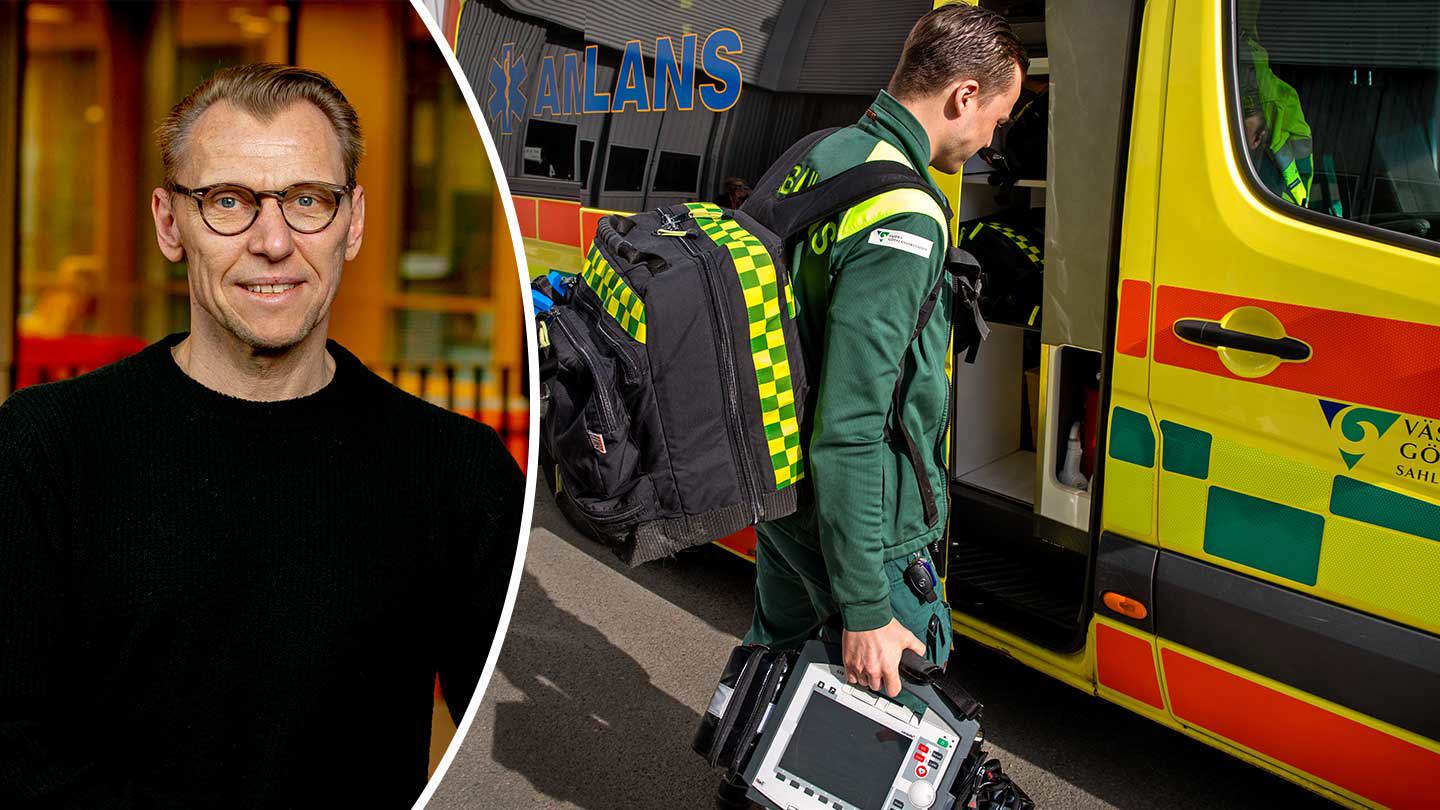Unique study of trauma patients in Swedish ambulance care
2024-01-22

In Sweden, more than one million ambulance trips are carried out every year and about 135,000 cases involve some form of injury or external violence. This includes both minor and life-threatening injuries. Despite the fact that trauma is currently the most common cause of death for people under the age of 45, there is not much knowledge about these patients in ambulance care. There is no national overall registration that can indicate the presence of trauma, type of injury, severity, and treatment results in Sweden.
Study provides more knowledge
"Today, we know almost nothing about trauma in Swedish ambulance care. In our research, we want to study how many people are assessed for trauma in ambulance care, how seriously injured they are, what measures and assessments are made, and how the patients then fare after discharge from hospital," said Glenn Larsson, researcher at the University of Borås and PICTA Prehospital Innovation Arena.
In a recently published scientific article, Glenn Larsson and his co-authors have matched data from the Swedish Trauma Registry (SweTrau) with the Swedish National Quality Registry for Ambulance Care (AmbuReg), a registry that collects information from all ambulance cases in Sweden. This is the first time that data from AmbuReg has been used in a research study.
"By matching patient data from the two registries, we gain important knowledge about measures and assessments of trauma patients in ambulance care linked to how the patients then fare," explained Glenn Larsson.
The results from the data collection show that 14 percent of all ambulance cases during a year dealt with some form of trauma. Of these, 4.3 percent were registered in SweTrau as seriously or potentially seriously injured. The most common cause of injury were traffic injuries and the second most common were falls from heights – a high-energy fall. The median age of those seriously injured was 45 years and the majority, 68 percent, were men. In 12 percent of the cases, some form of acute stabilisation or treatment in hospital, such as bone fracture repair, was needed.
"Among other things, we could see that there were relatively few patients who were really seriously injured and that the risk of severe disability or death was quite low. At the same time, we could see that about a quarter of those with serious injuries were assessed as low priority by the ambulance service. We need to take a closer look at the cause, but elderly patients with fall injuries are an example of a group that may have more invisible serious injuries and are therefore difficult to assess without access to the resources available in hospitals," said Glenn Larsson.
In an upcoming study, the researchers will take a closer look at how the large proportion of patients (96 percent) who were not registered as seriously injured in SweTrau fared by matching data from AmbuReg with the Swedish National Board of Health and Welfare's patient registry.
AI-based decision support will be developed with the help of unique data
The study was conducted within the framework of a Swedish-Norwegian EU project where unique data was collected that will increase knowledge and be used to develop AI-based decision support for ambulance personnel when people suffer trauma, for example in the event of a fall in the home or traffic injuries.
In a previous study, the researchers in the project examined medical record data from ambulance care and hospitals in Region Västra Götaland.
Similar data has been collected in Norway. The next step is to conduct analyses based on the data collected and then develop and test an AI-based decision support for the ambulance staff.
"Access to data in Sweden and Norway, enabling analyses of the entire process from the scene of an accident to discharge from hospital, has not been available before. But now we have collected unique data in both countries. The ambition is to develop methods for prediction and decision support for seriously injured patients that can help ambulance personnel achieve increased precision in their decisions, which will benefit the patients,” Glenn Larsson concluded.
Facts
The project Kontiki – AI as Decision Support for Patients and Healthcare is a 3-year project led by the University of Borås and Østfold University College. The project consists of several sub-projects/work packages. In total, the project has been granted just over SEK 23 million by the European Regional Development Fund (ERDF).
In work package 2, the goal is to develop, test, and implement prehospital decision support using artificial intelligence (AI) for ambulance personnel when patients suffer from acute illness, trauma, and stroke. In this project, the University of Borås, Østfold University Colleges, Chalmers University of Technology, PICTA, Østfold Hospital, Region Värmland, and Region Västra Götaland are collaborating.
Read more
Glenn Larsson – Prehospital ICT Arena (PICTA)
PreHospen – Centre for PreHospital Research
Swedish National Quality Registry for Ambulance Care (AmbuReg)
Kristina Axelsson
Lindholmen Science Park

